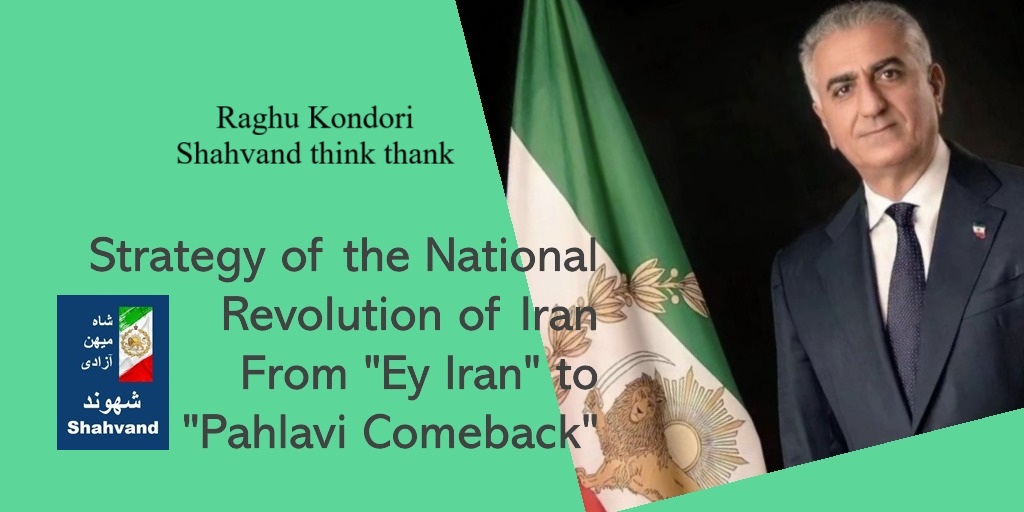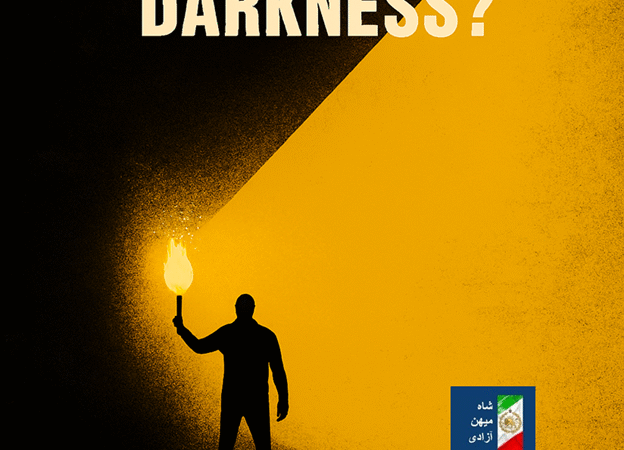From “Ey Iran” to “Pahlavi Comeback”

Strategy of the National Revolution of Iran
From “Ey Iran” to “Pahlavi Comeback”
Raghu Kondori | Shahvand Think Tank.
A cultural, symbolic, and social approach to the revival of a free and secular Iran
With special emphasis on: minimal organization and maximum participation
-
Return of Identity, Leadership, and National Hope
Iran has entered a stage of social convergence. From Nowruz and Chaharshanbe Suri to popular gatherings, signs indicate a search for a return to a modern, orderly, and dignified Iran.
Two central symbols of this atmosphere:
-
The anthem “Ey Iran” — the language of feeling and national belonging
-
The slogan “Pahlavi Comeback” — the language of hope and leadership
These two, along with the key structural principle of “minimal organization,” form the foundation of the “National Revolution” movement: a cultural and civil movement that enables the highest level of participation with the least organizational complexity.
-
Three Intellectual Pillars of the National Revolution
-
Modern Iranian nationalism: a new Iran, a blend of tradition and modernity; a secular, advanced, and orderly country.
-
Leadership of Prince Reza Pahlavi: symbol of historical continuity, political ethics, and hope for a democratic future.
-
Secularism and democratic coexistence: separation of religion from political power and respect for social diversity.
Core principle: all goals must grow from minimal organization — cellular networks with a low threshold for entry; focus on broad attraction, not centralized control.
-
Cultural and Social Tools of the Movement (with a Minimal organization)
-
Music and the national anthem
Collective singing of “Ey Iran” is a low-risk symbolic act that facilitates maximum participation — a small meaningful action that can be widespread and coordinated without the need for a complex structure. -
Promoting national cooperation and internal system leakage
Public information and messaging platforms (such as the official Prince’s website (https://iranopasmigirim.com)) act as catalysts for ideas; the focus is on public invitation, not field instructions. The goal is to attract a wide spectrum of citizens and even elements within the system toward national legitimacy. -
National rituals as grounds for presence
Nowruz, Sizdah Bedar, and Chaharshanbe Suri are natural spaces of unity. These events are cultural actions — easy to participate in, hard to deny their meaning. -
Diaspora and global soft power
Diaspora is a media and cultural arm; coordination should be decentralized, symbolic, and logistical, not field-controlled.
Characteristics of minimal organization:
-
Low participation threshold: simple and symbolic actions that anyone can join.
-
Cellular networks: small, self-managed local groups without direct contact with each other, connected to the Prince’s website.
-
Common semantic axis: short, understandable, and widespread messages that bring people into the arena without making them responsible for designing or leading operations.
-
Path of Action: Principles and Stages
First stage — Cultural awakening
-
Wide and spontaneous implementation of “Ey Iran” and dissemination of simple artistic content
-
Formation of small, self-managed local cells without the need for centralized structure
-
Publication of empathetic and inclusive messages to reduce psychological barriers to participation
Second stage — Social solidarity
-
Symbolic and coordinated gatherings in the form of cultural rituals; without hierarchical calls
-
Cellular networking focused on joint actions
-
Strengthening ties with the diaspora within the framework of symbolic messaging
Third stage — Political demand for regime change
-
Transition of demands into clear political claims: transition to a secular democratic system and holding a referendum under international supervision
Guiding principle: all stages progress with minimal central organization; the leadership role of the Prince is maintained.
-
Smart presence and confronting regime reactions
The regime may use cultural spaces for diversion. The response: smart presence in the same spaces (singing the anthem, displaying symbols) — without field calls or tactical training. This type of presence, based on minimal organization, shows that the movement lives in the heart of culture and does not need a complex structure.
-
Minimal organization, the key to maximum participation
The National Revolution of Iran is formed by the union of three elements: national feeling, reconstructed identity, and ethical leadership. But the condition is minimal organization: cellular networks, low-cost and widespread actions, and leadership that invites and guides people. This low-risk strategy with broad attraction can transform the cultural revolution into a legitimate political process.
Analytical Appendix
From passivity to action: how to transform the inactive opponent into a national active force?
Central question: Instead of asking “Why didn’t people come?”, one should ask: “How can participation be facilitated?”
Barriers to participation: fear of personal costs, economic fatigue, doubt about effectiveness, and lack of trust in the future.
Messaging and structural solutions (non-tactical):
-
Empathetic and guarantee-based messages to reduce perceptual risk
-
Hopeful and tangible narration of the possibility of change
-
Creating “low-risk participation” opportunities (cultural and symbolic acts)
-
Promoting self-managed cellular networks (minimal organization) for collective feeling without hierarchy
-
Transparency and leadership guarantees to convert trust into participation
Turning feeling into action requires cultural tools — music, symbol, ritual — and simple structures that make entry possible for all. Minimal organization, along with identity coherence and ethical leadership, is the way out of passivity.


